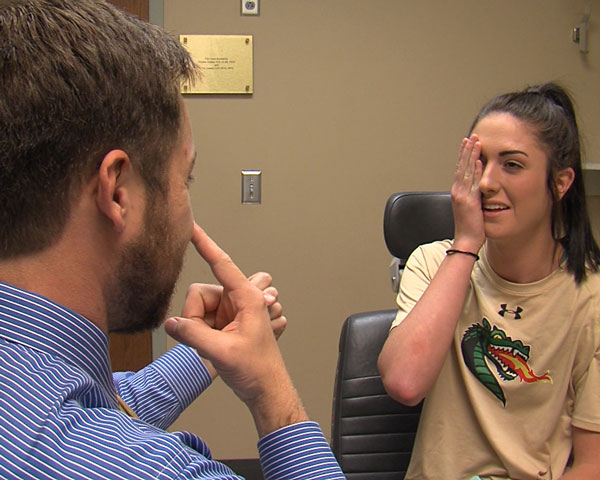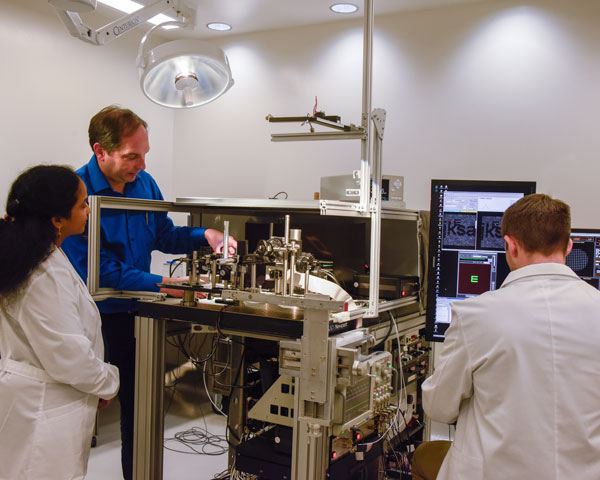Systems Neuroscience
Faculty and students who are involved in systems neuroscience research are looking at eye movement and control, the visual brain, neurodegeneration, anomalies of aging and development, sensation and perception and traumatic brain injury.
Featured Research

Using the Eye as a Window to the Brain
The UAB School of Optometry has partnered with UAB Athletics, UAB Sports Medicine and Children’s of Alabama to determine objective biomarkers in concussion using the eye as a window to the brain. Katherine K. Weise, OD, MBA, FAAO, and Mark Swanson, OD, MSPH, FAAO, lead the School of Optometry in its work with engineers, vision scientists, physicians, physical therapists and rehab specialists to evaluate impact exposure and its effects on the developing brain. Coaches and athletic trainers provide real-world perspective, encouraging science in athletics while maintaining high standards on and off the field. Student athletes at UAB lend a new meaning to the term trail “blazers” when they consent to a variety of research projects including:
- fMRI findings in NCAA-level athletes with low pupil scores
- Spectacle lenses in concussed children study that compares various lens designs in teenagers to determine if special anti-fatigue lenses help children with post-concussion syndrome return to learn with fewer symptoms
- Sideline testing that uses a multi-system approach to concussion diagnosis using the visual and vestibular systems, reaction time and executive function in cognitive tasking, and objective pupil testing

Visualizing and Stimulating Photoreceptors
Lawrence Sincich, PhD, is using an adaptive optics scanning laser ophthalmoscope to study the functional properties of cone photoreceptors in the living eye. With this instrument, it is possible to visualize and stimulate individual photoreceptors with different wavelengths of light and with very high precision. Optometry students Vasantha Kanukuntla and Paul Brown are being shown the operating principles of this retinal microscope, as they embark on their Master’s thesis work. Vasantha ’s project will examine the effect of microfocal differences on the efficiency of photon absorption in human subjects, while Paul’s measures how signals from photoreceptor pairs are summed using an electrophysiological approach in non-human primates.